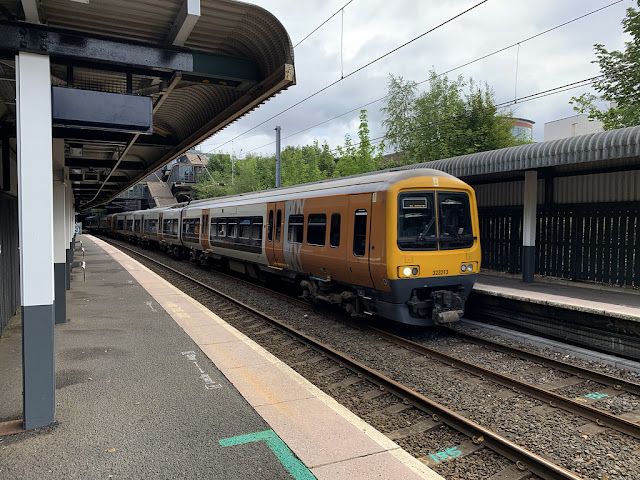 |
| A train stands on platform 1 and prepares to depart |
| Information | |
|---|---|
| Type: | Preserved Railway (Severn Valley Railway) |
| Station code: | BEW |
| Opened: | 1862 (Closed 1970) |
| Re-Opened: | 1974 |
| Platforms: | 3 |
The station was opened in 1862 by the West Midland Railway on their line from Hartlebury to Shrewsbury, later becoming part of the Great Western Railway. Originally Bewdley was a busy junction. The Tenbury & Bewdley Railway opened a line through the Wyre Forest in 1864 [1] and in 1878 a line down to Kidderminster was added by the GWR.
Bewdley began to be run-down in the 1960s along with much of the railway system. The Wyre Forest line closed in 1962 and the Severn Valley line in 1963. The remaining passenger services were ended in 1970 and the station closed. However, by now the Severn Valley Railway project had already started and in 1974 the SVR bought Bewdley station as part of its expansion down from Hampton Loade. Bewdley is one of the main stations on the SVR and was its administrative base until recently. Nowadays, it is the home of the SVR's wagon restoration works. The SVR's heritage DMU fleet is also usually stabled at Bewdley.
Bewdley has three platforms, platforms 2 and 3 being an island platform which is accessed via a footbridge. These platforms are usually the only ones used except at galas when local trains from Kidderminster terminating at Bewdley or specials will use platform 1.
Changing rail usage patterns and commuter need have seen some interest from Network Rail and some train operators like Chiltern Railways to run through services from the network to Bewdley but at the moment (and likely will for the foreseeable future) the station remains part of a preserved railway!
[1] Michael Welch, Diesels on the Western (Capital Transport, 2013) p. 5
Bewdley began to be run-down in the 1960s along with much of the railway system. The Wyre Forest line closed in 1962 and the Severn Valley line in 1963. The remaining passenger services were ended in 1970 and the station closed. However, by now the Severn Valley Railway project had already started and in 1974 the SVR bought Bewdley station as part of its expansion down from Hampton Loade. Bewdley is one of the main stations on the SVR and was its administrative base until recently. Nowadays, it is the home of the SVR's wagon restoration works. The SVR's heritage DMU fleet is also usually stabled at Bewdley.
Bewdley has three platforms, platforms 2 and 3 being an island platform which is accessed via a footbridge. These platforms are usually the only ones used except at galas when local trains from Kidderminster terminating at Bewdley or specials will use platform 1.
Changing rail usage patterns and commuter need have seen some interest from Network Rail and some train operators like Chiltern Railways to run through services from the network to Bewdley but at the moment (and likely will for the foreseeable future) the station remains part of a preserved railway!
 |
| 40106 stands at Bewdley |
 |
| Class 20 viewed from the footbridge |
 |
| View of the island platform |
 |
| Main station building on the left as a Class 31 comes through |
 |
| A Western stands at an old "Western" station |
[1] Michael Welch, Diesels on the Western (Capital Transport, 2013) p. 5



































